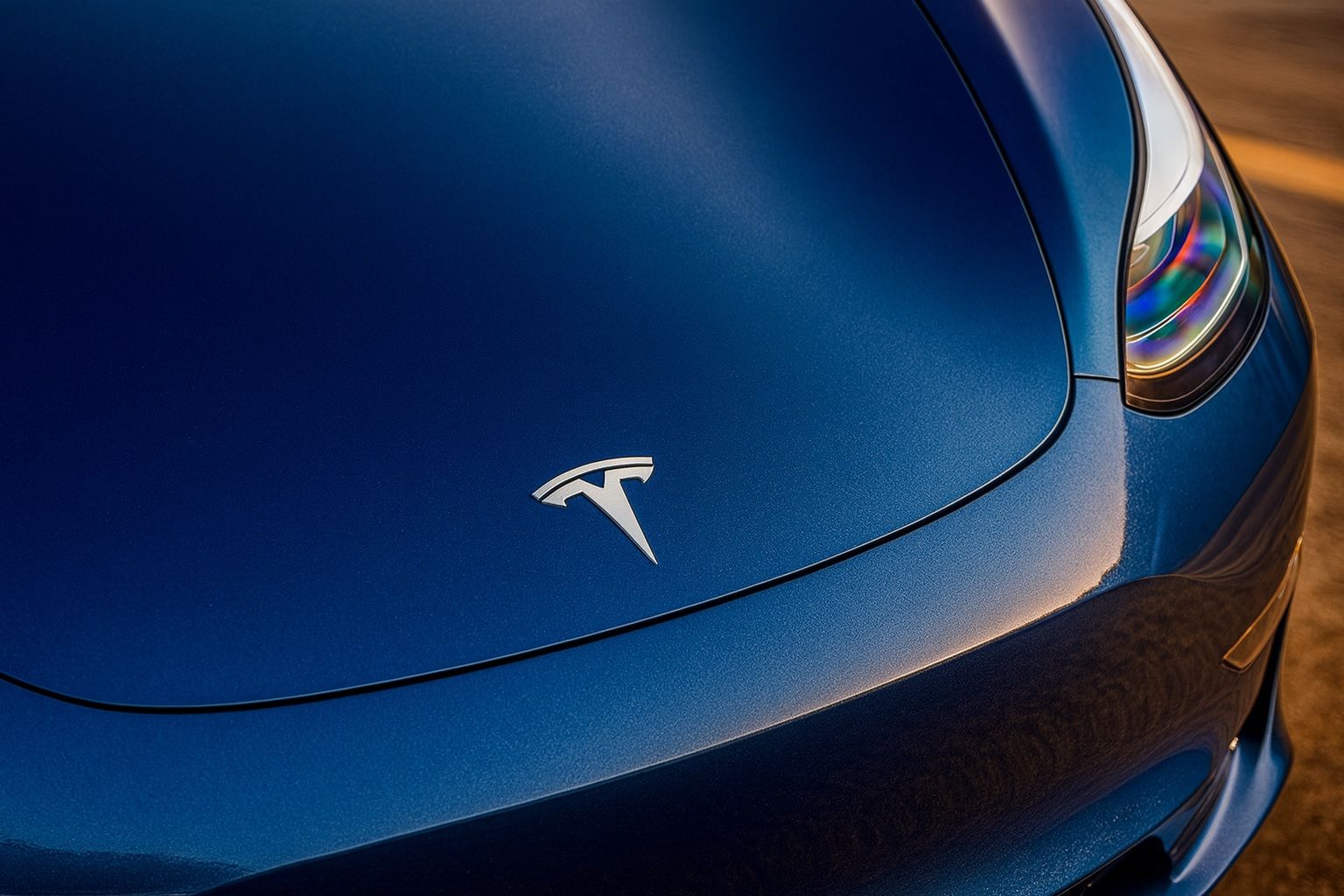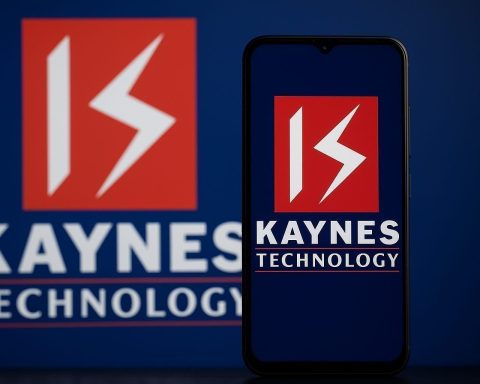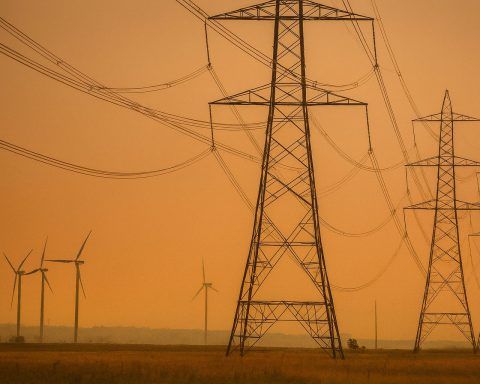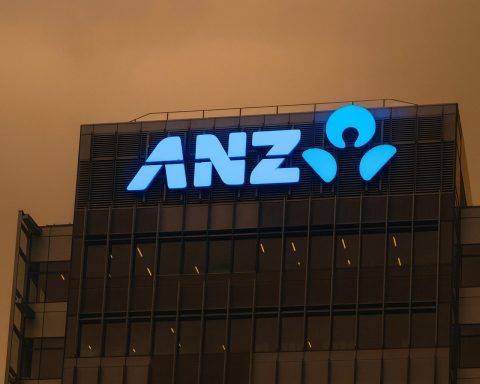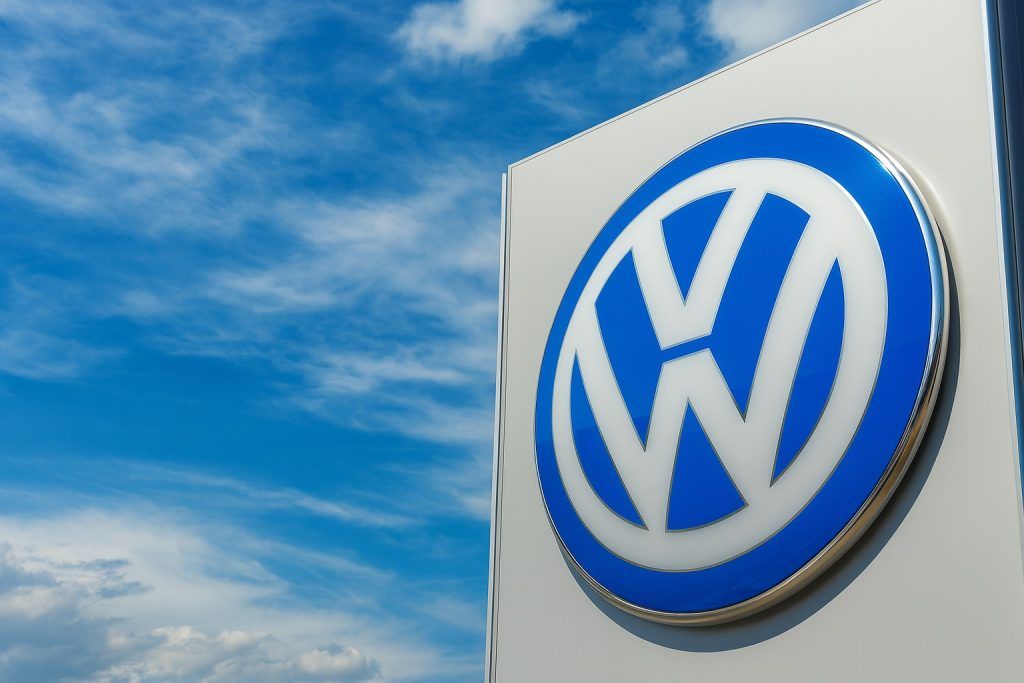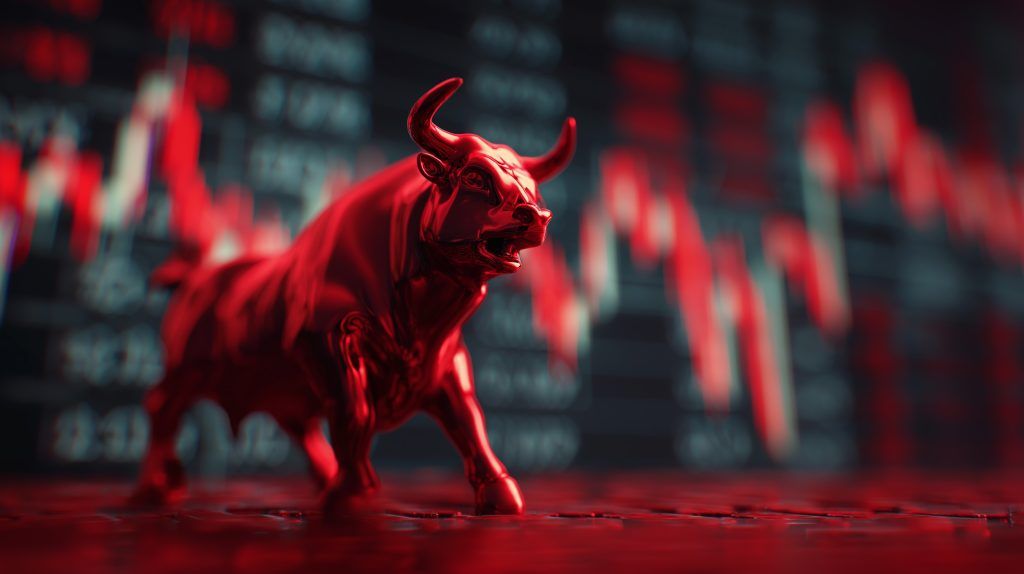- $1T Pay Vote (Nov 6): Tesla shareholders will vote on Nov. 6 whether to approve Elon Musk’s proposed $1 trillion, 12-tranche compensation package – by far the largest in corporate history [1]. Proxy advisers ISS and Glass Lewis have urged a no vote [2].
- Polarized Support: Unions and Democratic officials (e.g. NY State Comptroller Thomas DiNapoli) condemn the deal as “unchecked power” for Musk [3], while some large pension funds in Republican-run states (Florida, Texas) back it [4]. Retail Tesla “fan” investors also largely support Musk’s vision [5].
- Tesla Stock Soaring: Tesla shares have surged (~+80% YTD) and hit ~$460 on Oct. 28 [6] [7], near all-time highs, fueled by record Q3 deliveries (497,099 vehicles, +7.4% YoY) and aggressive price cuts [8] [9].
- Succession Plan (“Plan B”): Board Chair Robyn Denholm warns that if shareholders reject the pay plan, Musk could step down [10] [11]. Tesla is already lining up internal replacements: CFO Vaibhav Taneja and Senior VP Tom Zhu (ex-Gigafactory Shanghai) are the most prominent candidates [12] [13]. Denholm says any new CEO would “most likely” come from within [14], and the board has been preparing an “orderly transition.”
- Analysts & Outlook: Wall Street is split. BofA just raised its TSLA target to $471, calling Tesla “the clear leader in physical AI” but warning its valuation is “stretched” [15]. The average analyst price target (~$365) is actually well below today’s price [16]. Tesla bulls (e.g. Wedbush’s Dan Ives) tout further upside to $600, while bears (BNP Paribas) value closer to $307 [17].
With the $1 trillion compensation package and a potential CEO transition dominating headlines, Tesla finds itself at a crossroads. Below, we unpack the latest developments, market reaction, expert opinions and what’s next for the EV giant.
The Vote on Musk’s $1 Trillion Pay Package
Tesla’s extraordinary CEO pay plan ties Musk’s compensation to an almost-unprecedented set of growth targets. It would grant Musk up to 12% of Tesla’s stock if the company hits an $8.6 trillion market cap by 2035 – a jump of nearly 8× today’s value. Meeting these goals also requires delivering robotaxis, humanoid Optimus robots, and other ambitious milestones [18].
Tesla’s board argues this is needed to “keep Musk focused and incentivized” amid slowing EV demand and intensifying competition [19] [20]. But critics see it as overkill. Democratic leaders and union pension trustees (who hold only ~1% of shares) are launching campaigns to vote against the plan [21] [22]. New York Comptroller Thomas DiNapoli calls it “not pay for performance” but “pay for unchecked power,” and likens Tesla’s board to a “robber baron” if the deal passes [23] [24].
On the other hand, some large pension funds in Florida and Texas (run by Republicans) have declared support, noting the plan’s “ambitious, measurable milestones” and governance safeguards [25]. A prominent Tesla retail investor (“@TeslaBoomerMama”) defended the package as tying Musk’s pay to “transformative value creation” like robotaxis and AI robots [26].
Key expert view: Adam Sarhan, CEO of 50 Park Investments, calls this “a new bar for CEO incentives” and “nothing new” in principle, but he notes the scale is historic [27]. Board oversight is a key issue: SOC Investment Group director Tejal Patel warns the package would ask investors to “relinquish having a meaningful voice in the company” by boosting Musk’s shareholding [28].
Shareholder and Political Reactions
The debate has fallen along unusual political lines. Democratic officials (NY’s DiNapoli and City Comptroller Brad Lander, Massachusetts Treasurer Deb Goldberg) have united with labor unions to warn against the pay deal [29] [30]. They argue Musk is already richly incentivized as the largest shareholder, and that further rewards undermine accountability. Top proxy advisers ISS and Glass Lewis concur, advising investors to vote no [31].
By contrast, some Republicans’ pension funds argue it aligns pay with Tesla’s groundbreaking goals and falls within market norms. As Tesla board chair Robyn Denholm bluntly said this week, rejecting the package risks losing Musk. In interviews she stressed that Musk’s billions of dollars in Tesla stock already give him incentive, but also warned shareholders that, without the deal, Musk “most likely would… disengage” and shift focus to other ventures [32] [33]. She confirmed Tesla’s Plan B is internal: CFO Vaibhav Taneja and SVP Tom Zhu (architect of the Shanghai Gigafactory) are top succession candidates [34] [35]. Denholm even toyed with the Cybercab EV concept (now apparently “less autonomy-focused”) to reassure investors.
Business Standard reports Denholm as saying: “To ensure an orderly transition, the most likely [successor] would be internal”, though external candidates aren’t ruled out [36]. Tesla has been quietly meeting large institutions (Vanguard, BlackRock, State Street) to sway their vote, since passive funds often follow ISS/GlassLewis guidance [37]. In a PR stunt, Tesla recently stationed an Optimus robot outside the Nasdaq exchange handing out candy – a reminder of the AI future Musk is promising [38].
Tesla’s Financial Performance and Market Reaction
Despite governance controversies, Tesla’s underlying business is firing on many cylinders. In Q3 2025 Tesla delivered 497,099 cars, smashing the ~443k consensus estimate [39] [40]. This boom was largely due to U.S. buyers rushing to use a $7,500 EV tax credit before it expired Sept 30 [41] [42]. To boost volume further, Tesla rolled out cheaper “Standard Range” versions of the Model 3 sedan (~$36,990) and Model Y (~$39,990) in early October [43] [44]. These budget trims have smaller batteries and fewer features, trimming price by ~$5k but also squeezing profit margins [45] [46].
The result: Tesla’s stock has been on a tear. By Oct. 21 TSLA traded around $445, near its 52-week high [47]; it closed at $460.55 on Oct. 28 [48]. This reflects an 80% gain so far in 2025 vs. roughly +17% for the S&P 500 [49]. However, the market is jittery. After the new low-cost models were unveiled, TSLA fell ~4% amid margin concerns [50]. Analysts expect Q3 earnings (out Oct. 22) to show ~5% revenue growth (~$26.3B) but a ~24% drop in EPS (~$0.55) due to the price cuts and loss of subsidies [51] [52]. Musk himself cautioned of “a few rough quarters” as sales partially pulled forward from Q4 [53] [54].
Quote: “Tesla’s intent is clear – trade short-term margin for long-term network scale,” says Shay Boloor of Futurum Equities [55]. This strategy is boosting revenue now but later profit will be watched closely.
Analyst Forecasts and Valuation
Wall Street remains divided on TSLA. Bears argue today’s ~$460 price already factors in the “optimism” of Musk’s unproven AI/robotics bets. BNP Paribas’s James Picariello just started coverage at Sell with a $307 target [56]. Many analysts have “Hold” or even Sell ratings, with the average 12-month price target ~$365 – implying ~18% downside from current levels [57].
Optimists still exist. Wedbush’s Dan Ives reiterated a $600 target, citing “strong demand and future AI/self-driving tech upside” [58]. Bank of America (BofA) recently raised its target to $471 (from $341) while maintaining Neutral. BofA argues Tesla is the “clear leader in physical AI” – thanks to its head start on Vision-based autonomous driving and robotics – but warns “valuation remains stretched” [59] [60]. Their sum-of-parts model actually splits Tesla’s value across segments (Robotaxi 45%, Optimus 19%, FSD 17%, core auto 12%, energy 6%) [61].
BofA also notes some headwinds: Q3 automotive margins fell to ~17% (from ~30%) due to higher costs and tariffs [62], and U.S. EV credit roll-off may damp volume. But they still expect progress: Tesla’s energy division is doing well, and Robotaxi tests are expanding.
Quote: “We continue to see TSLA as the company with the largest advantage in terms of autonomous driving initiatives and physical AI… However, we acknowledge that there are challenges in the near term and the current valuation is stretched,” wrote BofA’s analysts [63].
Broader Tesla Topics: Products and Politics
Other recent news shaping Tesla’s story: On the product side, investors eagerly await the launch of the Cybertruck (long-delayed) and hints of a $30K mass-market model [64]. These new vehicles are critical for sustaining demand beyond 2025. Meanwhile, regulators have probed Tesla’s Full Self-Driving after reports of safety issues [65], which adds to execution risk.
On the political front, Musk’s social media posts and political activism have at times turned off some customers and investors. (Business Standard notes Tesla’s stock lagged the market earlier in 2025 due to “Musk’s political activity” [66].) There are also hearings and court battles: Tesla has urged the Delaware Supreme Court to reinstate the old $56B pay plan [67], and some see broader backlash against Musk’s style.
Market Snapshot
- Tesla (TSLA) stock: ~$460 (closed Oct 28) [68].
- 52-week range: $214 – $488 [69]. (Near the high end after recent rally.)
- YTD performance: ~+80% (vs. +17% for S&P 500) [70].
- Analyst consensus: Hold (avg target ~$365, 18% below current) [71].
- BofA target: $471 (neutral rating) [72].
- VW Europe: Others cutting EV prices, intensifying competition as Tesla enters new markets.
What’s Next for Tesla?
All eyes now turn to the Nov. 6 shareholder meeting. A “yes” vote would green-light Musk’s trillion-dollar plan and, in theory, keep him fully engaged at Tesla. A “no” could trigger a dramatic leadership change. Denholm hinted Tesla even has “more than one person” waiting in the wings if needed [73]. Any change at the top would inevitably refocus the company’s strategy.
Even after the vote, Tesla’s future will hinge on execution. Can Tesla continue to lead in AI/robotics (Optimus, Robotaxi) while fending off electric rivals? Will price cuts translate into sustainable profits? Investors and customers alike will be watching both the policy and the vehicles.
Bottom line: Musk’s $1 trillion pay package vote is both a vote of confidence in his vision and a referendum on Tesla’s governance. With record deliveries and a bubbly stock price, Tesla seems to be firing on all cylinders – but critics warn that trading equity for ambition may come at a steep cost to shareholders’ voice and value. As one expert summarized, Musk’s situation is “a high-stakes gamble” [74]. The outcome will shape Tesla’s road map for years to come.
Sources: Authoritative news outlets and analyses, including Reuters [75] [76], Financial Times (subscription), Yahoo/Investing.com [77] [78], ft.com, TS2.Tech [79] [80], Business Standard [81] [82], and others. (Citations above link to sourced content.)
References
1. www.reuters.com, 2. ts2.tech, 3. www.reuters.com, 4. www.reuters.com, 5. www.reuters.com, 6. ts2.tech, 7. www.investing.com, 8. ts2.tech, 9. www.investing.com, 10. www.reuters.com, 11. www.business-standard.com, 12. www.reuters.com, 13. www.carsguide.com.au, 14. www.business-standard.com, 15. www.investing.com, 16. ts2.tech, 17. ts2.tech, 18. www.ainvest.com, 19. www.reuters.com, 20. www.ainvest.com, 21. www.reuters.com, 22. www.reuters.com, 23. www.reuters.com, 24. www.reuters.com, 25. www.reuters.com, 26. www.reuters.com, 27. www.reuters.com, 28. www.reuters.com, 29. www.reuters.com, 30. www.reuters.com, 31. ts2.tech, 32. www.business-standard.com, 33. www.carsguide.com.au, 34. www.reuters.com, 35. www.carsguide.com.au, 36. www.business-standard.com, 37. www.business-standard.com, 38. www.business-standard.com, 39. ts2.tech, 40. ts2.tech, 41. ts2.tech, 42. ts2.tech, 43. ts2.tech, 44. ts2.tech, 45. ts2.tech, 46. ts2.tech, 47. ts2.tech, 48. www.investing.com, 49. ts2.tech, 50. ts2.tech, 51. ts2.tech, 52. ts2.tech, 53. ts2.tech, 54. ts2.tech, 55. ts2.tech, 56. ts2.tech, 57. ts2.tech, 58. ts2.tech, 59. www.investing.com, 60. www.investing.com, 61. www.investing.com, 62. www.investing.com, 63. www.investing.com, 64. ts2.tech, 65. ts2.tech, 66. www.business-standard.com, 67. www.business-standard.com, 68. www.investing.com, 69. www.investing.com, 70. ts2.tech, 71. ts2.tech, 72. www.investing.com, 73. www.business-standard.com, 74. www.ainvest.com, 75. www.reuters.com, 76. www.reuters.com, 77. www.investing.com, 78. www.investing.com, 79. ts2.tech, 80. ts2.tech, 81. www.business-standard.com, 82. www.business-standard.com
